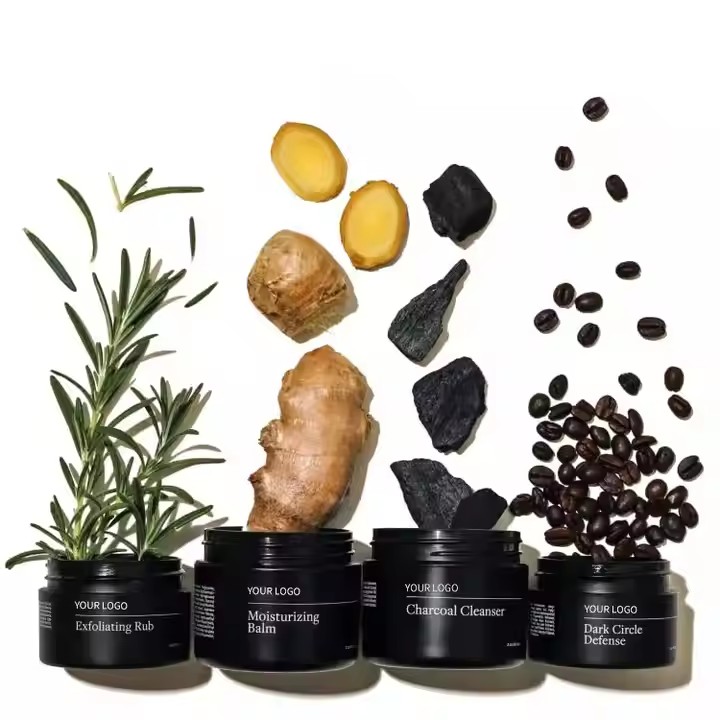As an indispensable and crucial part of the skincare routine, the value of face cream is closely linked to the physiological characteristics of the skin, the multiple challenges of the external environment, and the differentiated needs of different individuals. From the perspective of the skin’s own moisture retention mechanism, although the outermost layer of the skin, the stratum corneum, is responsible for preventing excessive water loss, its own moisture retention capacity gradually weakens with age, environmental changes, or improper skin care. The oily components in face cream, such as Vaseline and squalane, can form a fine physical barrier on the skin surface, just like putting on an invisible “moisturizing coat” for the skin, effectively reducing water evaporation. Desiccants such as glycerin and hyaluronic acid, on the other hand, absorb moisture from the surrounding environment like sponges, replenishment the stratum corneum with sufficient moisture and keeping the skin hydrated at all times. Especially in autumn and winter, in dry environments such as air-conditioned rooms, the air humidity is extremely low, and the rate of skin moisture loss significantly accelerates. At this time, face cream, with its stronger sealing and moisturizing effect (containing a higher oil content compared to lotion), becomes a must-have for people with dry skin or those in extremely dry environments.

In addition to the basic moisturizing function, face cream also plays a crucial role in strengthening the skin barrier. In modern life, factors such as excessive cleansing, frequent makeup, and exposure to ultraviolet rays can easily damage the skin barrier, leading to problems such as skin sensitivity, redness, and flaking. The repair ingredients such as ceramides, cholesterol and fatty acids contained in the face cream can precisely simulate the structure of sebum, just like “construction workers”, carefully repairing the lipids between the cells of the stratum corneum, restoring the damaged skin barrier to its original integrity, and thereby enhancing the skin’s ability to resist external stimuli. This solid “protective shield” can effectively reduce the direct damage to the skin from external pollutants, cosmetic particles, etc. It is especially suitable for people with sensitive skin or those whose skin is in a vulnerable period after medical aesthetics.
In addition, face cream is also an excellent carrier of various functional ingredients, capable of providing precise solutions for different skin problems. For people with anti-aging needs, face creams containing retinol, hyaluronic acid, peptides and other ingredients are like “anti-aging mini motors” for the skin. They can promote the production of collagen, improve fine lines, and restore the skin’s elasticity and luster. For those who pursue whitening, they can choose face creams that contain ingredients such as vitamin C and nicotinamide. These ingredients can effectively inhibit the synthesis of melanin, help even out skin tone and brighten the skin. For skin prone to inflammation and redness, a face cream containing soothing ingredients such as centella asiatica, panthenol, and bismyrrh is like a gentle “comforter”, capable of quickly alleviating skin discomfort. Compared with toners and essences, the formula of face cream is usually thicker and the concentration of active ingredients may also be higher. Therefore, it is especially suitable for mature skin or people who need deep nourishment.
It is worth mentioning that face cream is not exclusive to dry skin; oily skin can also benefit from it. Many people with oily skin mistakenly believe that the thick texture of face cream will cause acne, but in fact, oily skin may have a condition of “oily on the outside and dry on the inside”. The lack of moisture in the skin will instead stimulate the sebaceous glands to secrete more oil. At this point, choosing an oil-free formula or gel-like floor cream (such as products containing silane ingredients) can not only provide the necessary moisture for the skin but also avoid an oily feeling, thereby helping to regulate the water-oil balance. For combination skin, a zoned care approach can also be adopted. Apply a light lotion to the T-zone and a moisturizing cream to the cheeks, specifically meeting the needs of different skin areas.
In terms of responding to external environmental threats, face cream also plays an indispensable role. Although face creams themselves do not have sun protection functions, some products contain antioxidant ingredients such as vitamin E and ferulic acid, which can effectively neutralize free radicals produced by factors such as ultraviolet rays and blue light, reduce oxidative damage, and help the skin resist photoaging. Meanwhile, in winter when the cold wind is biting or the urban air pollution is severe, the sealing ingredients of the face cream can form a physical protective layer on the skin surface, just like building a “safety line” for the skin, reducing the direct damage of the external adverse environment to the skin.
People of different ages and skin conditions have different needs for face cream. Young skin (aged 18 to 25) usually only needs to choose a light and moisturizing cream to prevent dryness and maintain the healthy state of the skin. For mature skin (30+), it is necessary to focus on anti-aging and repairing face creams to replenish collagen and elastic fibers in a timely manner and slow down the aging process of the skin. During some special periods, such as after medical aesthetics (laser treatment, acid brushing, etc.), the skin is in a fragile repair stage. At this time, using medical face cream containing growth factors and hyaluronic acid can provide sufficient nutrition and support for the skin and promote wound healing. When the seasons change, the skin is prone to sensitivity. At this time, it is necessary to choose a soothing cream with simple ingredients to avoid excessive irritation and help the skin smoothly get through the sensitive period.
Post time: Jun-10-2025










